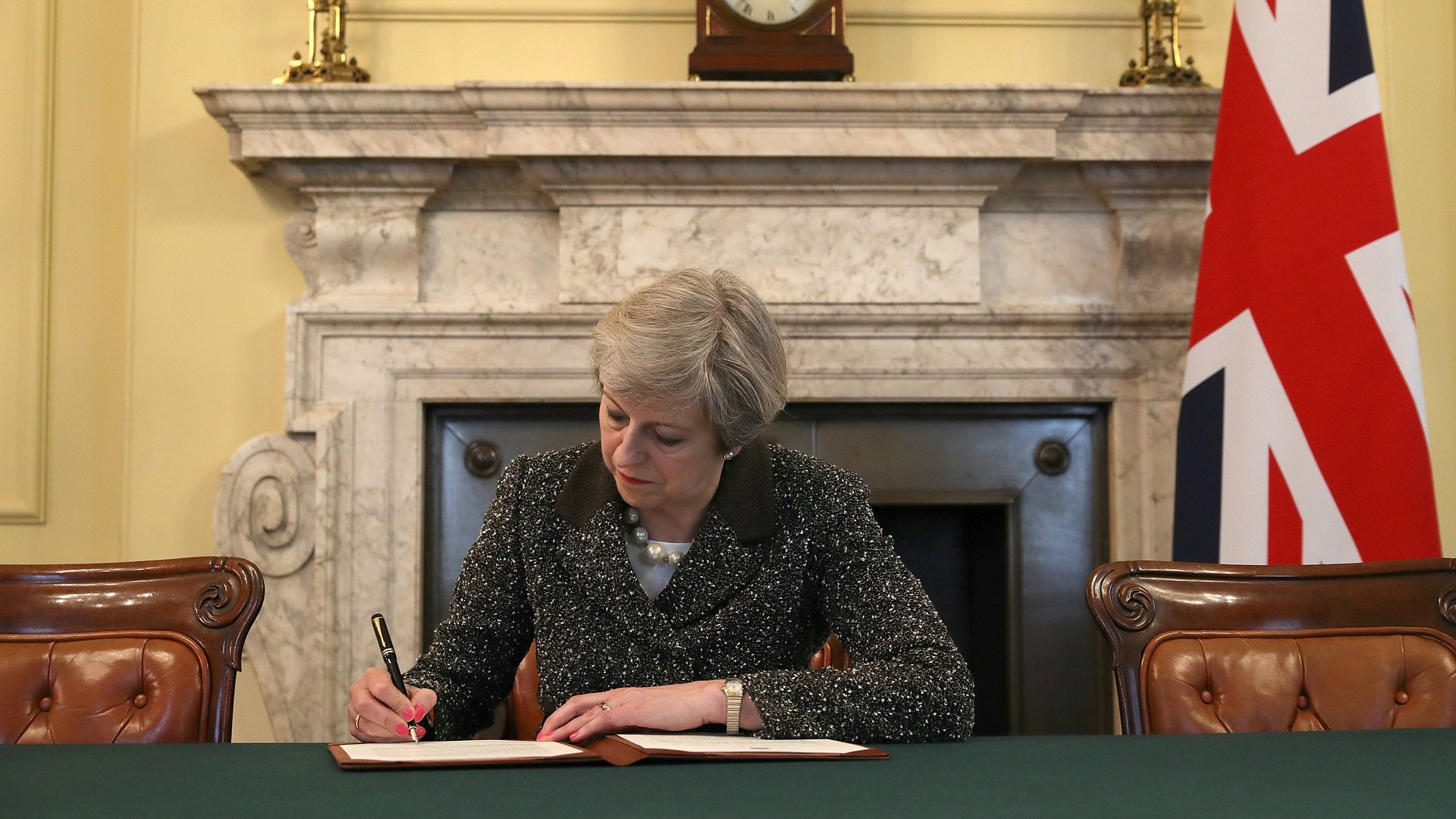Britain leaves the EU in one year, and still faces a no-deal “hard Brexit”
Britain’s prime minister Theresa May put the UK on a course to the point of no return a year ago, when she triggered Article 50 on March 29, formally notifying the European Union it was leaving. From that date, the UK had two years to sort out a divorce deal from the remaining 27 European members.


Britain’s prime minister Theresa May put the UK on a course to the point of no return a year ago, when she triggered Article 50 on March 29, formally notifying the European Union it was leaving. From that date, the UK had two years to sort out a divorce deal from the remaining 27 European members.
However, with just one year to go until Britain goes it alone, nothing has been set in stone—other than the government turning the nation’s passports blue. In fact, a no-deal Brexit, also known as a “hard Brexit,” could be a distinct possibility.
On top of the agenda should be sorting out trade and immigration deals. However, even if Britain and the EU could agree on terms for these issues tomorrow, it won’t be ratified unless the UK government finds a way to resolve the contentious issue of how the border between Ireland and Northern Ireland should be handled. The EU wants to avoid a hard customs border on the island.
Independent research houses, like the Economist Intelligence Unit, say that they expect a deal to be done. But the EIU warns that while it thinks the UK will strike a comprehensive free-trade-agreement (FTA) with the EU, there is a distinct possibility “a no-deal Brexit is still possible, with negotiations most likely to break down during trade talks in 2019.”
The saving grace is that the EU has supported Britain’s proposal for a transition deal that allows the UK to implement new laws and processes over a certain time period after the exit next year to avoid risking a sudden and abrupt impact on the economy. In this case, the transition period is around two years after Brexit happens, though some have said that transition period is worryingly short (paywall). The EIU warns that if there is no deal sealed by the time Brexit happens, the UK’s nominal GDP would be 2.7% lower than its core scenario by 2022. The core scenario involves a trade and immigration deal being in place and that real GDP growth would average 1.8% a year in 2020-22.
“The transition agreement provides business with some certainty that they will have time to adjust to the new UK-EU relationship,” said Ana Nicholls, managing editor for The EIU’s industries services in a statement. “Even so, Brexit will cause disruption that may be difficult to manage, and there is still the possibility of a cliff-edge departure in 2021.”
The sectors that would be worst hit are the financial services, health care and life sciences, and autos, says the EIU.
High regulatory barriers would have a wide-ranging effect over everything from bank assets to the derivatives markets. In a no-deal Brexit scenario for healthcare, there could be an estimated £90 ($127) less per person because of a slowdown in tax-revenue growth which would eat into the actual rise in health care spending, with a worst-case scenario being a shortage in much-needed medicine.
Meanwhile, “UK vehicle-makers will try to expand in other export markets, but will also need to stimulate domestic demand. Under a no-deal Brexit, vehicle sales would be about 13% lower in 2022 than they would be if the UK secures a comprehensive free trade deal.”